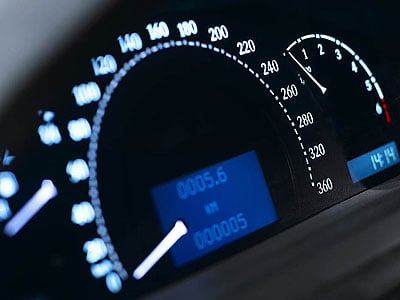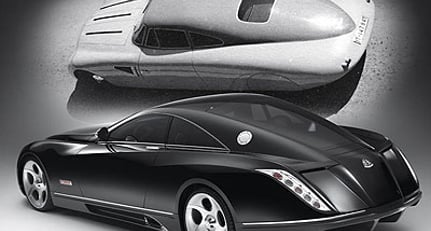The Car
Text: Classic Driver
Photos: René Staud Studios
Stuttgart/Berlin, May 11, 2005. The Maybach high-performance show car "Exelero" was unveiled to the world for the first time this afternoon in the Tempodrom in Berlin. The 700-hp two-seater with a V-12 biturbo engine is a unique custom model produced for Fulda Reifenwerke, which is using the Maybach Exelero as a reference vehicle for a newly developed generation of wide tyres.
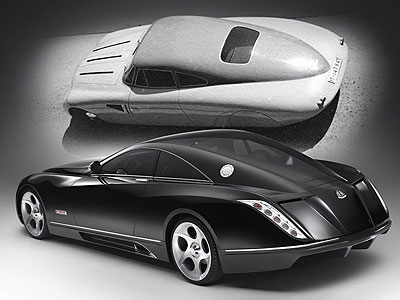
The German manufacturer of luxury cars built the unique model as a modern interpretation of its legendary streamlined sports car from the 1930s, thereby forging a link with the historical predecessor, which at that time was likewise based on a powerful Maybach automobile (SW 38) and used by Fulda for tyre tests.
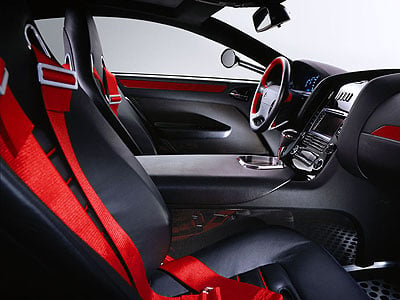
The Exelero embodies the highest expression to date of the Maybach individualisation strategy of offering specific custom solutions on request. In initial tests on the high-speed track in Nardo (Italy), the unique vehicle reached a top speed of 351.45 km/h (FIA*-standard unit of measurement). Developers at Maybach designed the custom model with the participation of students from Pforzheim College. The Exelero was built by the prototype specialists at Stola in Turin (Italy). There are no plans to produce the model in series.
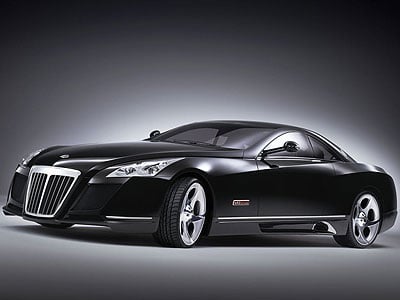
ClassicInside - The Classic Driver Newsletter
Free Subscription!
The Inspiration
It is well-known that Fulda Reifen has been producing car tyres for almost 100 years. Less well-established in the public awareness is the fact that throughout almost its entyre existence Fulda has presented its product programme with eye-catching special vehicles.
Thus, the intensive consideration of the company’s tradition on its 100th anniversary and also of the streamlined Maybach SW 38, led to the realisation of such a project once again. As the date when the new ultra-high-performance Exelero wide tyre would be ready for the market approached, the desire to combine this high-end product with a high-end vehicle became even more intense.
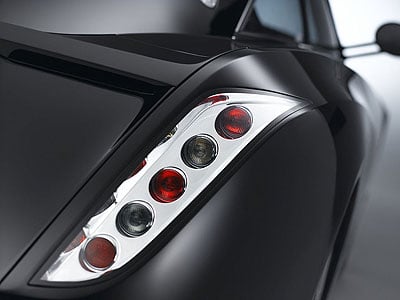
The proposal made by Fulda to Maybach, to develop a sporty special model for the optimal presentation of the new Excelero high-tech wide tyre, fell on fertile ground. Following several initial discussions, Maybach and DaimlerChrysler, whose experts were standing by to provide advice and assistance, decided to tackle the ambitious project.
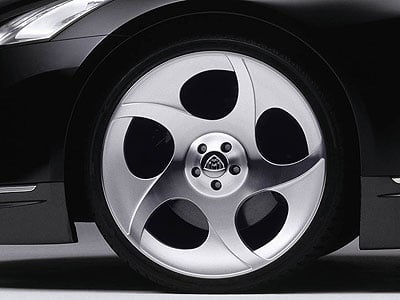
Following several coordinating discussions with Leon Hustinx, Maybach’s manager, agreement was reached: Maybach would build a car for Fulda. Objective: to position the vehicle as an impressive ambassador for the new ultra-high performance tyre generation Exelero.
Transforming a limousine, the basis for the Exelero is the Maybach 57, into a coupé is extremely demanding. When considering the engine alternatives, it soon became clear that the basic twelve-cylinder engine used in the Maybach limousines would not achieve the desired maximum speed of around 350 km/h despite the Biturbo turbo charger. However, several improvements werre made to the Maybach type 12 engine; the cubic capacity was increased from 5.6 to 5.9 liters and the turbo charger optimized. The result was convincing: on the test bed almost 700 hp and at least 1,000 newton meters of torque were recorded, sufficient to achieve the targeted maximum speed of 350 km/h.

The Tests
Sunday, 1 May 2005, 5.45 hrs., sunrise in a radiantly blue Southern Italian sky. The atmosphere is tense on Nardo’s 12.5-kilometer circuit. Klaus Ludwig, a three-time DTM winner sits in his racing gear and helmet, apparently completely calm, at the wheel of the Maybach Exelero and waits for the signal to start in his attempt on the record.
This highlight of the project had been preceded by a number of intensive tests, starting with the various wind tunnel phases, then in March came the roll-out in Turin where the Maybach Exelero was officially handed over to the client, Fulda Reifen. In mid-April, it then went to the so-called "running-in track" at the Sindelfingen plant. Here, the vehicle was subjected to intensive checks of its engine functions, brakes, chassis and handling etc., already at speeds of around 200 km/h.
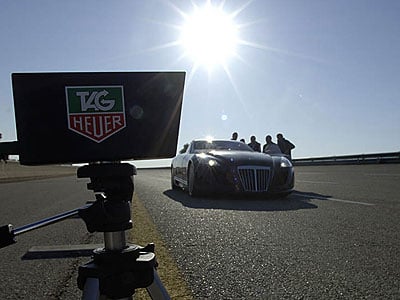
Finally, at the end of April, the technical inspection of the Exelero was carried out on the DaimlerChrysler test track in Papenburg, i.e. the test measurements conducted provided the basis for preparations for the attempt at the high speed record in Nardo. For example, spoilers were tried out in various positions and further adjustments made to optimize the speed and stability.
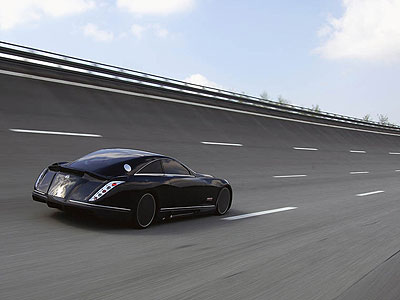
Since the Exelero vehicle is intended to prove itself in the long run in practical use, it was appropriately designed as a road machine and needed a licence. That meant that the TÜV (Technical Control Board) had to give its technical blessing to the Exelero.
When all the reservations from the side of the DaimlerChrysler specialists, the tyre engineers and the TÜV experts, had been satisfied, nothing stood in the way of the final mission in Southern Italy.
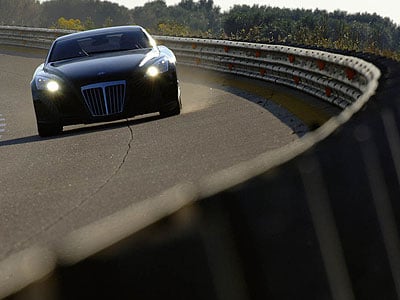
At 7.09 hrs., Klaus Ludwig already completed his first lap at a speed of 346 km/h . Just one lap later the targeted record of 350 was broken. The FIA standardized measuring unit registered a world record top speed of 351.45 km/h! Klaus Ludwig’s comments after breaking the record: "It was unbelievable how easily the vehicle could be handled at this record speed. Particularly the tyres conveyed an absolutely safe feeling. Everything was simply just right: technology, chassis and tyres."
The Facts
| Motor: | 5,908cc V12-Biturbo |
| Max. Power: | 700 bhp at 5.000 rpm |
| Max. Torque: | 1020 Nm at 2.500 rpm |
| Length: | 5890 mm |
| Width: | 2140 mm |
| Height: | 1390 mm |
| Wheelbase: | 3390 mm |
| Dry Weight: | 2660 kg |
| Acceleration: | 0 - 100 km/h in 4,4 sec. |
| Top Speed: | 351,45 km/h |
